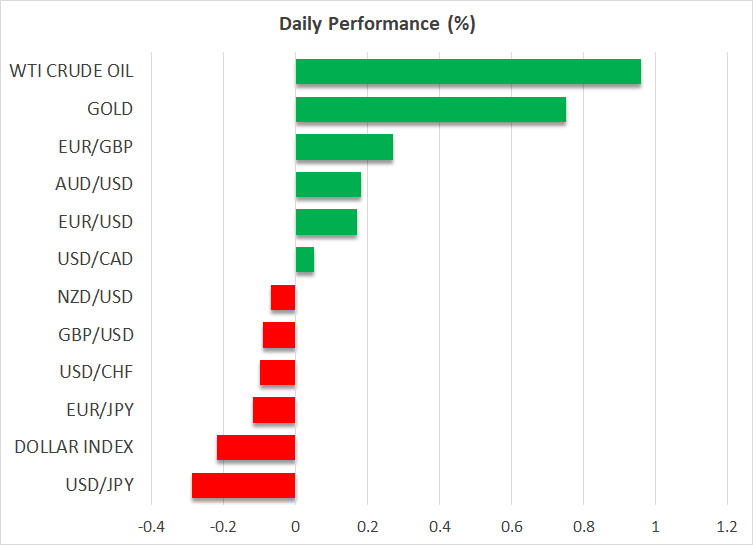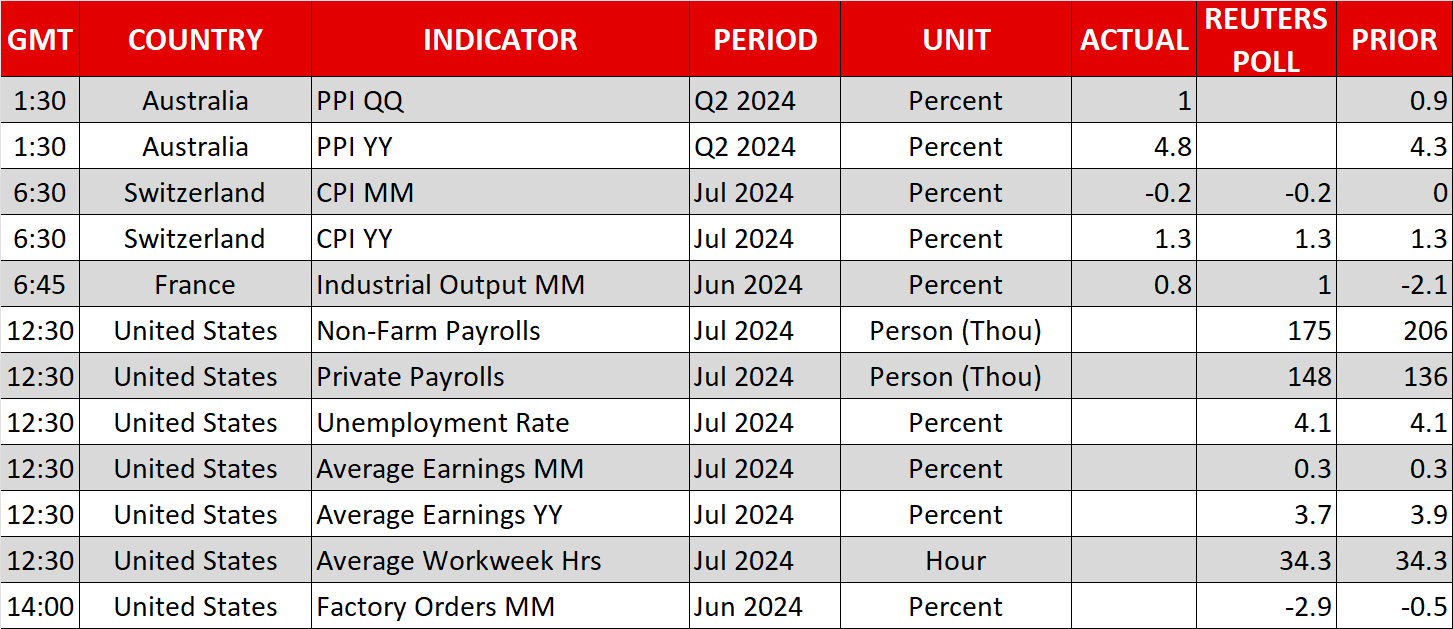US slowdown fears grip markets ahead of NFP

Carnage returns to equity markets
The mid-week bounce on Wall Street didn’t last long as rate-cut optimism turned to gloom following soft economic data out of the US on Thursday. The ISM manufacturing PMI hit the lowest since November last month, with employment shrinking the most since June 2020 even as the prices paid component rose unexpectedly.
With some concerns creeping in lately about the health of the labour market, the PMI miss stoked fears that the US economy may be headed for a hard landing. Investors were already on edge from worse-than-expected weekly jobless claims released earlier in the day.
Shares on Wall Street reversed sharply lower, with the Nasdaq 100 falling the most on Thursday and global indices opening in a sea of red today.
Rate cut bets ramped up as NFP eyed
The selloff is somewhat surprising considering that the Fed gave its strongest indication yet on Wednesday that rate cuts will commence in September. But the rate cut question has quickly shifted from ‘when’ to ‘by how much’ as investors have upped their bets to more than three 25-bps reductions in 2024.
This raises the prospect of a 50-bps cut in December if the Fed stands pat in November due to the clash with the US presidential election. But this may all be a knee-jerk reaction and today’s jobs report will be crucial in either reinforcing the slowdown fears or resetting the tone.
The US labour market likely added 175k jobs in July and the unemployment rate is expected to have stayed unchanged at 4.1%. Any figure below 150k or an uptick in the jobless rate will do little to calm the jitters.
Tech earnings fail to meet high expectations
But on Wall Street, it’s not all about the Fed or the economy as traders seem to be re-evaluating their outlook on tech and AI stocks.
Apple and Amazon joined their tech peers yesterday in announcing underwhelming earnings and ambitious spending plans on artificial intelligence. Amazon additionally disappointed with a weak guidance for the current quarter, while Intel’s announcement of massive layoffs sent shockwaves through the tech sector globally.
Worries about growth, the US elections, and overspending on AI, combined with elevated geopolitical risks, pushed the VIX index, also known as Wall Street’s fear gauge, to the highest since April.
Yen leads flight to safety but pound tumbles
The sharp slide in Treasury yields has been of little comfort to equities this week, as much of the rally in bonds is down to safe haven flows rather than Fed rate cut expectations, and this is underscored by the US dollar’s resilience.
However, the greenback has come under pressure against other safe havens such as the yen and Swiss franc, and gold has been edging up too and is fast approaching its July peak.
The yen is on track to finish top of the FX league table for the second week running as the Bank of Japan steps up its policy normalization, with more rate hikes likely later this year.
The pound, however, is the worst performing major this week following the Bank of England’s decision yesterday to lower rates by 25 basis points. Although the BoE signalled that it will be ‘careful’ about cutting again, this hasn’t stopped sterling from brushing one-month lows against the dollar.






















